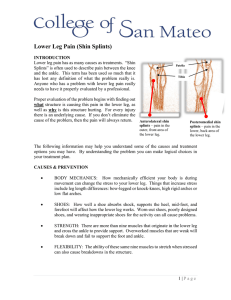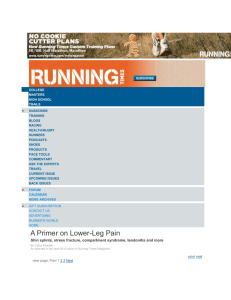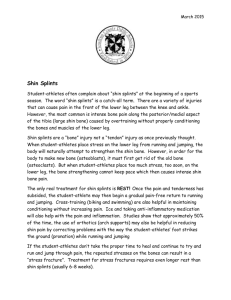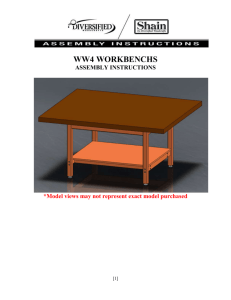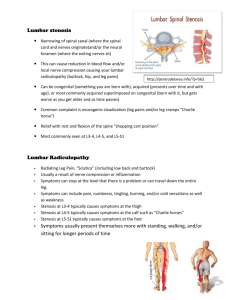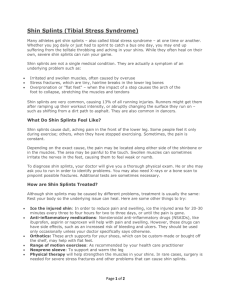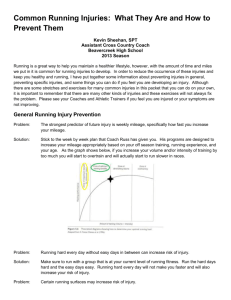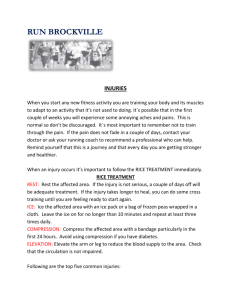Medial Tibial Stress Syndrome
advertisement
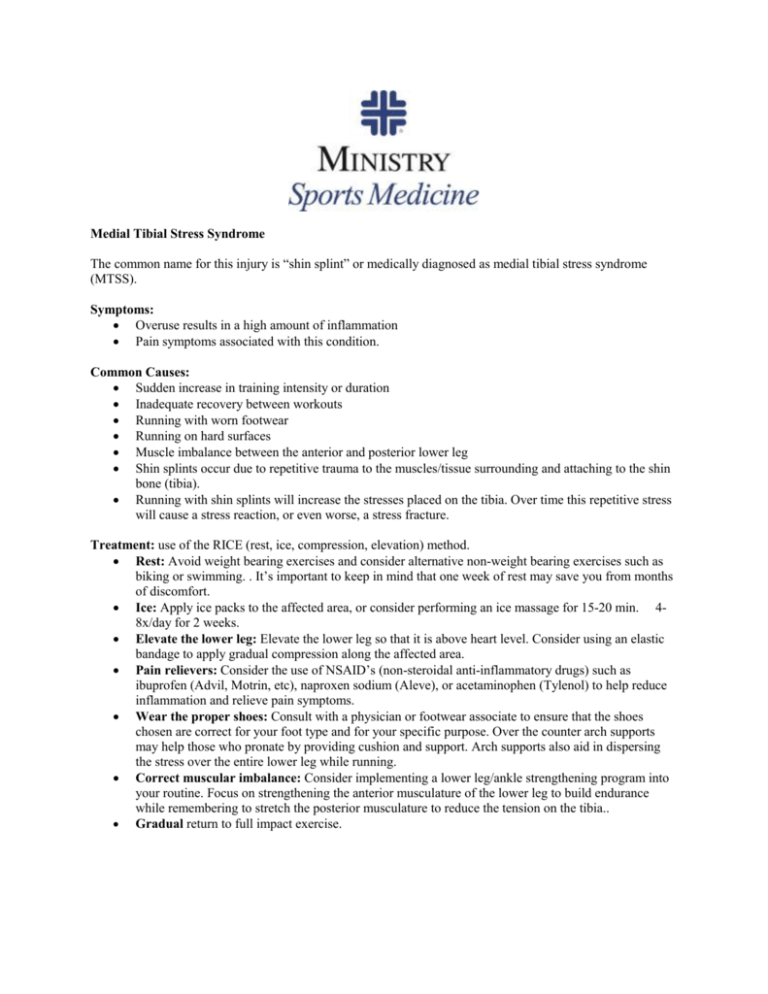
Medial Tibial Stress Syndrome The common name for this injury is “shin splint” or medically diagnosed as medial tibial stress syndrome (MTSS). Symptoms: Overuse results in a high amount of inflammation Pain symptoms associated with this condition. Common Causes: Sudden increase in training intensity or duration Inadequate recovery between workouts Running with worn footwear Running on hard surfaces Muscle imbalance between the anterior and posterior lower leg Shin splints occur due to repetitive trauma to the muscles/tissue surrounding and attaching to the shin bone (tibia). Running with shin splints will increase the stresses placed on the tibia. Over time this repetitive stress will cause a stress reaction, or even worse, a stress fracture. Treatment: use of the RICE (rest, ice, compression, elevation) method. Rest: Avoid weight bearing exercises and consider alternative non-weight bearing exercises such as biking or swimming. . It’s important to keep in mind that one week of rest may save you from months of discomfort. Ice: Apply ice packs to the affected area, or consider performing an ice massage for 15-20 min. 48x/day for 2 weeks. Elevate the lower leg: Elevate the lower leg so that it is above heart level. Consider using an elastic bandage to apply gradual compression along the affected area. Pain relievers: Consider the use of NSAID’s (non-steroidal anti-inflammatory drugs) such as ibuprofen (Advil, Motrin, etc), naproxen sodium (Aleve), or acetaminophen (Tylenol) to help reduce inflammation and relieve pain symptoms. Wear the proper shoes: Consult with a physician or footwear associate to ensure that the shoes chosen are correct for your foot type and for your specific purpose. Over the counter arch supports may help those who pronate by providing cushion and support. Arch supports also aid in dispersing the stress over the entire lower leg while running. Correct muscular imbalance: Consider implementing a lower leg/ankle strengthening program into your routine. Focus on strengthening the anterior musculature of the lower leg to build endurance while remembering to stretch the posterior musculature to reduce the tension on the tibia.. Gradual return to full impact exercise.
